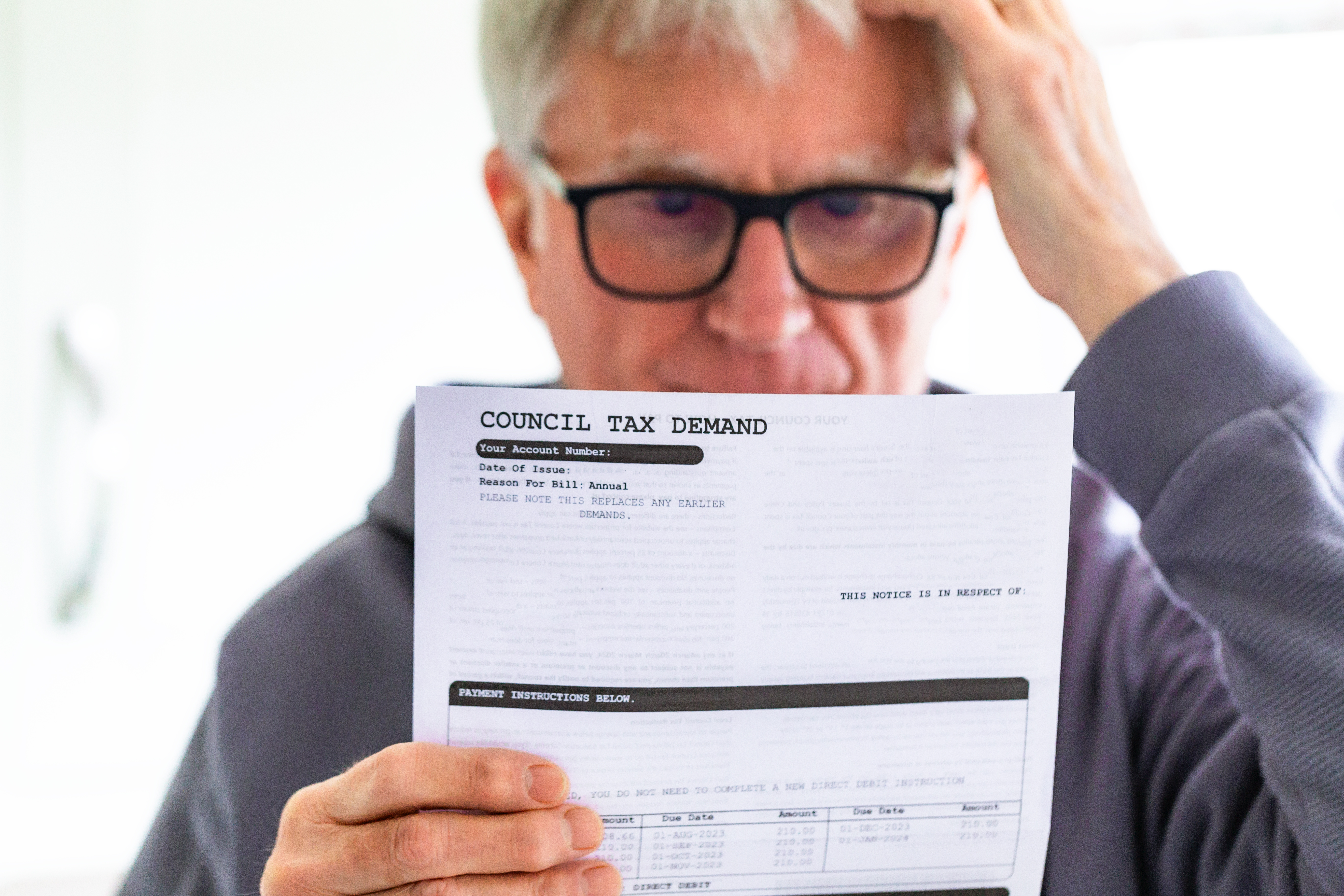The UK areas with the highest and lowest council tax burden
London residents are less impacted by council tax compared to other parts of the UK, new data shows


Residents in some northern towns and cities have a higher council tax burden than those in the most exclusive neighbourhoods in London, new analysis has found.
The study, by removals company Getamover.co.uk, looked at government data on band D council tax costs for 2025/26 versus median household incomes from 2022/23 across all English local authorities.
It determined in which regions residents are spending the highest proportion of their income on council tax. The findings show a clear north/south divide – with the North left with higher bills.
MoneyWeek
Subscribe to MoneyWeek today and get your first six magazine issues absolutely FREE

Sign up to Money Morning
Don't miss the latest investment and personal finances news, market analysis, plus money-saving tips with our free twice-daily newsletter
Don't miss the latest investment and personal finances news, market analysis, plus money-saving tips with our free twice-daily newsletter
In Pendle, a borough in Lancashire in the North West, residents pay the highest proportion of income on council tax in England – at 10.97% of a person’s median annual income.
This equates to £2,535.19 spent yearly on council tax for people on an average annual income of £23,100.
Pendle has the highest level of child poverty of any UK local authority, with 43.2% of children under the age of 16 living in relatively low-income families in 2022/23.
City of London borough residents, on the other hand, pay the lowest, with 2.10% of someone’s annual median income going to council tax.
This means they are paying £1,274.07 a year in council tax, on average incomes of £60,700.
Yet the area is home to some of the most expensive property in London, with 13% of homes worth more than £2 million, according to a recent study by property brokers Jefferies James.
Which parts of the UK have the highest council tax burden?
The data shows how council tax creates a much higher relative burden on households in areas where incomes are lower.
Overall, Northern and Midlands local authorities dominate the top 20 highest tax burden areas, while London dominates the bottom 10.
David Burrows, head of Getamover.co.uk, says: "These figures show significant regional inequality in how council tax affects household budgets.
"For families planning a move, the relationship between local tax rates and average salaries can significantly affect long-term financial health.
“What matters isn't just the headline council tax figure, but how much of your monthly income it will consume based on local wage levels."
Rank | Local authority | Band D council tax cost 2025 to 2026 | Median annual income | Council tax as percentage of median income |
|---|---|---|---|---|
1 | Pendle | £2,535.19 | £23,100 | 10.97% |
2 | City of Nottingham | £2,656.19 | £24,300 | 10.93% |
3 | Burnley | £2,455.83 | £23,600 | 10.41% |
4 | Blackpool | £2,392.21 | £23,300 | 10.27% |
5 | Torridge | £2,479.12 | £24,200 | 10.24% |
6 | Redcar and Cleveland | £2,424.47 | £23,800 | 10.19% |
7 | Middlesbrough | £2,487.65 | £24,500 | 10.15% |
8 | Ashfield | £2,506.63 | £24,700 | 10.15% |
9 | Walsall | £2,498.27 | £24,700 | 10.11% |
10 | North Devon | £2,514.66 | £24,900 | 10.10% |
Nine of the 10 areas with the lowest council tax burden relative to income are in London, with Windsor and Maidenhead being the only non-London authority in the bottom 10.
None of the areas with the highest tax burden are in London or the South East, highlighting the significant north-south divide in the financial impact of council tax.
Which parts of the UK have the lowest council tax burden?
Rank | Local authority | Band D council tax cost 2025 to 2026 | Median annual income | Council tax as percentage of median income |
|---|---|---|---|---|
1 | City of London | £1,274.07 | £60,700 | 2.10% |
2 | Wandsworth | £997.75 | £42,200 | 2.36% |
3 | Westminster | £1,019.00 | £42,600 | 2.39% |
4 | Kensington and Chelsea | £1,591.59 | £47,700 | 3.34% |
5 | Hammersmith and Fulham | £1,451.42 | £38,300 | 3.79% |
6 | Tower Hamlets | £1,754.57 | £37,300 | 4.70% |
7 | Windsor and Maidenhead | £1,823.50 | £38,200 | 4.77% |
8 | Islington | £2,012.10 | £40,300 | 4.99% |
9 | Southwark | £1,877.90 | £36,200 | 5.19% |
10 | Camden | £2,106.69 | £40,600 | 5.19% |
Many northern local authorities charge similar council tax to southern areas. But the significantly lower average incomes in these regions mean residents are spending a much higher percentage of their earnings on this tax.
Recent research from The Equality Trust found council tax is a key source of disproportionate taxation in the UK, with the poorest 10% paying 7% of their income on council tax while the richest 10% pay just 1.2%.
Get the latest financial news, insights and expert analysis from our award-winning MoneyWeek team, to help you understand what really matters when it comes to your finances.
Laura Miller is an experienced financial and business journalist. Formerly on staff at the Daily Telegraph, her freelance work now appears in the money pages of all the national newspapers. She endeavours to make money issues easy to understand for everyone, and to do justice to the people who regularly trust her to tell their stories. She lives by the sea in Aberystwyth. You can find her tweeting @thatlaurawrites
-
 ‘Why I have ditched my Help to Buy ISA for cash savings and the stock market’
‘Why I have ditched my Help to Buy ISA for cash savings and the stock market’Without the 25% bonus, my Help to Buy ISA is effectively redundant, says MoneyWeek writer Sam Walker.
-
 Is your inheritance tax allowance cut if you sell to downsize or sell your home to pay for care?
Is your inheritance tax allowance cut if you sell to downsize or sell your home to pay for care?Downsizing relief is a little-known benefit that could save your loved ones tens of thousands of pounds in inheritance tax after you’ve died.
